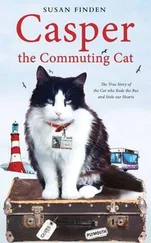With less than ten minutes to go before the start, Dickson pointed to another boat and said, “I think you should go above this yacht by at least twenty feet,” meaning that he wanted Ellison to turn closer to the source of the wind so Sayonara would pass on the upwind side of the other boat.
“I can do that, but do I have a choice? Maybe we should duck under him.”
“No, that would leave us in too much congestion. Your gap is above.”
On land Ellison rarely deferred to anyone, but he allowed Dickson to make many of the most important decisions on Sayonara. In fact, Ellison couldn’t even see much of what was in front of his boat because his view was obscured by sails. He had to rely on Joey Allen, who was perched at the bow and was using hand signals to send information about other boats.
After the gun signaling that five minutes remained before the start, every yacht attempted to close in on the line. It was as if a hundred pacing panthers were confined to an ever shrinking cage. They turned back and forth, testing one another, searching for an advantage, each trying to stake out territory. When there was just a minute left, Brad Butterworth, Sayonara ’s tactician and one of its primary helmsmen, counted down the seconds, loud enough for Ellison and everyone in the cockpit to hear. Ellison’s eyes darted in every direction, searching for traps and openings in the impossibly concentrated field while also watching the wind’s direction and the shape of the sails.
Sayonara was close to the line. A bit too close. Tony Rae eased the mainsail so it spilled wind and Sayonara lost some of its speed. That meant Sayonara wouldn’t have a flying start, but at least it wouldn’t be stuck behind any other boats. With five seconds left, the grinders brought in the sails, and the boat surged forward.
A blast from a cannon—a replica of one that was on board Endeavour when Captain Cook reached Australia—announced the start of the race. Sayonara ’s sails were brought in, and it crossed the line seconds later. There was screaming on many boats, but Ellison’s crew was almost silent as he executed a near perfect start.
Many yachtsmen assumed that Ellison’s money was the key to Sayonara ’s success—and money certainly played a role. Ellison happily spent six-figure sums for a single regatta, replacing $50,000 sails the way tennis players buy a new can of balls. Sayonara sailed in only five or six major races a year, but since they were scattered all over the globe, the yacht had to be shipped between continents on cargo ships. For each trip, everything that was attached to the hull—the mast, rigging, winches, steering wheels—was removed and packed so that a kind of giant padded sock could be slipped around the boat. The hull was then lifted onto a ship, where it rested in a custom-made steel frame. The packing procedure required a week’s labor from six people—as did the reassembly at the other end. Bill Erkelens, a member of Sayonara ’s sailing crew, and his wife, Melinda, who together worked as the boat’s full-time managers, oversaw the transportation. They also kept up-to-date with yachting regulations, arranged for the crew’s transportation, and took care of maintenance. It all cost money, and every month they sent a summary of expenses to one of Ellison’s assistants for his approval.
But the money represented only a small part of the story. Every maxi-yacht owner is rich. What set Sayonara apart from its peers was the quality of the crew, the way its members had learned to work together, and Ellison’s ability to retain them race after race. To some extent it was self-perpetuating: everyone likes being on the winning team. But the real key to Sayonara ’s success lay in the degree to which its crewmen specialized in their jobs. On many boats, decisions about tactics and the trim of a sail are second-guessed as a matter of course. Second-guessing on Sayonara was unusual. Ellison had come to appreciate the skill of his crew, and he rarely overruled them.
Dickson encouraged crewmen to develop sharply defined roles—and to take total responsibility for them. Joey Allen, the bowman, also selected the equipment he used. Whenever a change was made to the rigging, Allen was consulted. If he wanted to move a fitting or try a different kind of pulley, Bill Erkelens would arrange for it. If Allen later wanted to go back to the old one, that was fine, too.
Immediately after the start, T. A. McCann, who was responsible for raising and lowering the sails in front of the mast, began providing commentary on the wind. Looking for ripples on the water, he tried to divine the velocity and direction of the wind that would be encountered over the next sixty seconds. Seeing where the breeze or a gust disturbed the surface of the water is easy, but judging the strength and direction of the wind, which many sailors call “pressure,” is an acquired skill of great subtlety.
“Steady pressure for the next twenty, and then we’re going to get a big puff,” T.A. called out. “Ten seconds to the puff. Ten, nine, eight …”
The goal was to help Ellison and the sail trimmers anticipate what would come next so as to create a seamless operation in which every change was reacted to rapidly and optimally. There was intelligence at every level. Sayonara ’s grinders, most of them built like linebackers, may have looked as if they were selected only for their brawn, but they were all talented yachtsmen. Though they listened to T.A. and the sail trimmers, they also watched the wind and sails themselves, so they would be better prepared to act.
Communicating on a maxi-yacht is difficult, so Dickson insisted that anyone who didn’t have vital information to convey keep quiet. T.A. was the only crewman who was expected to do much talking, and even he tried to be economical, occasionally asking, “Am I talking too much?” A few minutes after the start, when someone on the rail shouted about an approaching gust, T.A. quickly shut him down. “Hey, I’ll make that call. Let’s relax. We’ve done this millions of times. Let’s stick with the system.”
ON THE SWORD of Orion , Steve Kulmar was at the helm for the start, and Glyn Charles was at his side, suggesting tactics. Kulmar had already determined that he wanted to be on the southern end of the starting line, and he was heading in that direction.
Dags was at the bow, shouting warnings about yachts Kulmar couldn’t see. “Look out,” Dags yelled. “ Nokia is coming at us again.”
The Racing Rules of Sailing, as specified by the International Sailing Federation, determine who has the right-of-way on a racecourse. A boat that is on a port tack—meaning that the wind is approaching the boat from its port, or left, side—must change course if it’s on a collision course with a boat on a starboard tack. The convention is based on the now archaic notion that the starboard side is inherently superior. In centuries past, senior shipwrights constructed that side, leaving the port side to apprentices. Captains made a point of boarding their vessels from the starboard side. Naval artillery salutes typically had an odd number of blasts because they were fired from alternate sides of the ship, with the first and last guns both coming from the starboard side. While some of those traditions have been forgotten, the supremacy of boats sailing on starboard tacks remains absolute.
The rules are more complicated when two yachts are both on the same tack: the windward boat, the one that’s closer to the source of the wind, must yield to the downwind vessel. The rules are clear, but inevitably they aren’t enough to prevent collisions or controversy.
Читать дальше












